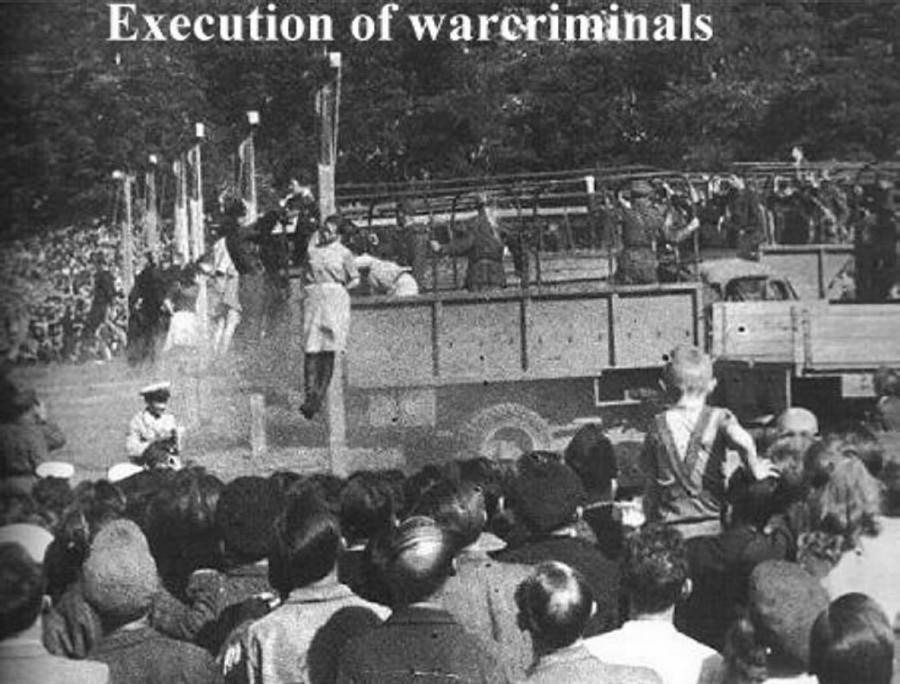
During the occupation the SS had murdered around 500 Polish prisoners and buried them in a meadow near Lamsdorf (now Lambinowice). Date?
German women living in the Polish town of Gruben were subjected to one of the worst atrocities ever committed on Polish soil. During the occupation the SS had murdered around 500 Polish prisoners and buried them in a meadow near Lamsdorf (now Lambinowice).
In an act of revenge, the deputy mayor (Czeslaw) who was Jewish, ordered all the German women of nearby Gruben to dig the bodies up. This the women were forced to do but started to suffer sickness and nausea as the badly decomposed bodies were brought up. Laid out in rows, the women were ordered to 'Lie down beside them!' 'Hug them!' 'Kiss them!' and with their weapons the perpetrators forced the backs of the women's heads deep into the slime of the dead Polish faces. Spitting, retching and vomiting, and smelling like nothing on earth, the poor women were marched back to Lamsdorf.
As most of the corpses had typhus, sixty-four of the Gruben women soon died. In the interment camp at Lamsdorf a total of 8,064 German civilians were being held there prior to being transported back to Germany.
Of the 8,064 internees, 6,488 (including 628 children) died of physical maltreatment, typhus and other diseases.
As one German survivor said "the methods used by the Nazis at Auschwitz were horrible, but the methods of the Poles were even more horrible".
..
One day, the [Jewish] deputy [Czeslaw] started a fire in one of the German barracks, cried, "Sabotage!" and as the German women scooped up the sand, carried it in their skirts, and dumped it on the ferocious flames, he pushed the hysterical women in. As for the guards, they once put a German's black beard in a vise, locked the vice solidly, and set the German afire. Every day the names of the Germans who'd died went to Czeslaw, who always said, "Why so few?" In time, almost all of Bielitz was dead.... The wretchedest Germans there were the women of Gruben.
During the war, the SS had buried some Poles, five hundred bodies, in a wide meadow near Lamsdorf, but Czeslaw had heard there were ninety thousand, and he ordered the women of Gruben to dig them up. The women did, and they started to suffer nausea as the bodies, black as the stuff in a gutter, appeared. The faces were rotten, the flesh was glue, but the guards — who had often seemed psychopathic, making a German woman drink urine, drink blood, and eat a man's excrement, inserting an oily five-mark bill in a woman's vagina, putting a match to it — shouted at the women of Gruben, "Lie down with them!"
The women did, and the guards shouted, "Hug them!" "Kiss them!" "Make love with them!" and, with their rifles, pushed the backs of the women's heads until their eyes, noses and mouths were deep in the Polish faces' slime. The women who clamped their lips couldn't scream, and the women who screamed had to taste something vile. Spitting, retching, the women at last stood up, the wet tendrils still on their chins, fingers, clothes, the wet seeping into the fibers, the stink like a mist around them as they marched back to Lamsdorf. There were no showers there, and the corpses had all had typhus, apparently, and sixty-four women of Gruben died. (John Sack, An Eye for an Eye: The Untold Story of Jewish Revenge Against Germans in 1945, Basic Books, New York, 1993, pp. 130-131)